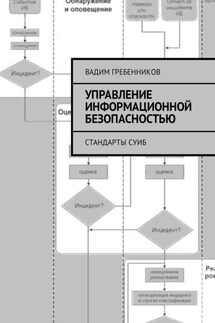IT Cloud - страница 30
and can be installed in one way ELK in Docker – container. It supports fetching data from files, network and
standard stream both at the input and at the output, and most importantly, the native Elastic Search protocol.
Logstash monitors log files based on modification date or receives over the network telnet data from a distributed
systems, for example, containers and, after transformation, it is sent to the output, usually in Elastic Search. It is simple and
comes standard with the Elastic Stack, making it easy and hassle-free to configure. But thanks to
Java machine inside is heavy and not very functional, although it supports plugins, for example, synchronization with MySQL
to send new data. Filebeat provides slightly more options. An enterprise tool for everything
cases of life can serve Fluentd due to its high functionality (reading logs, system logs, etc.),
scalability and the ability to roll out across Kubernetes clusters using the Helm chart, and monitor everything
data center in the standard package, but about this relevant section.
To manage logs, you can use Curator, which can archive old ones from ElasticSearch
logs or delete them, increasing the efficiency of its work.
The process of obtaining logs is logical carried out by special collectors: logstash, fluentd, filebeat or
others.
fluentd is the least demanding and simpler analogue of Logstash. Customization
produced in /etc/td-agent/td-agent.conf, which contains four blocks:
** match – contains settings for transferring received data;
** include – contains information about file types;
** system – contains system settings.
Logstash provides a much more functional configuration language. Logstash agent daemon – logstash monitors
changes in files. If the logs are not located locally, but on a distributed system, then logstash is installed on each server and
runs in agent mode bin / logstash agent -f /env/conf/my.conf . Since run
logstash only as an agent for sending logs is wasteful, then you can use a product from those
the same developers Logstash Forwarder (formerly Lumberjack) forwards logs via the lumberjack protocol to
logstash to the server. You can use the Packetbeat agent to track and retrieve data from MySQL
(https://www.8host.com/blog/sbor-metrik-infrastruktury-s-pomoshhyu-packetbeat-i-elk-v-ubuntu-14-04/).
Also logstash allows you to convert data of different types:
** grok – set regular expressions to rip fields from a string, often for logs from text format to JSON;
** date – in case of archived logs, set the date when the log was created not as the current date, but take it from the log itself
** kv – for logs like key = value;
** mutate – select only the required fields and change the data in the fields, for example, replace the "/" character with "_";
** multiline – for multi-line logs with delimiters.
For example, you can decompose a log in the format "date type number" into components, for example "01.01.2021 INFO 1" decompose into a hash "message":
filter {
grok {
type => "my_log"
match => ["message", "% {MYDATE: date}% {WORD: loglevel} $ {ID.id.int}"]
}
}
The $ {ID.id.int} template takes the class – the ID template, the resulting value will be substituted into the id field and the string value will be converted to the int type.
In the "Output" block, we can specify: output data to the console using the "Stdout" block, to a file – "File", transfer via http via JSON REST API – "Elasticsearch" or send by mail – "Email". You can also order conditions for the fields obtained in the filter block. For instance,:








